-
Product Name
Anti-Aqp4 antibody
- Documents
-
Description
Rabbit polyclonal antibody to Aqp4
-
Tested applications
WB, IHC-P, FC
-
Species reactivity
Human, Mouse, Rat, Pig, Cow, Rabbit, Sheep
-
Alternative names
WCH4 antibody; aqua antibody
-
Isotype
Rabbit IgG
-
Preparation
This antigen of this antibody was klh conjugated synthetic peptide derived from human aqp4 271-323/323
-
Clonality
Polyclonal
-
Formulation
Liquid, 0.01M TBS(pH7.4) with 1% BSA, 0.03% Proclin300 and 50% Glycerol.
-
Storage instructions
Store at -20℃ for one year. Avoid repeated freeze/thaw cycles. The lyophilized antibody is stable at room temperature for at least one month and for greater than a year when kept at -20℃. When reconstituted in sterile pH 7.4 0.01M PBS or diluent of antibody the antibody is stable for at least two weeks at 2-4℃.
-
Applications
WB:1:500-2000
IHC-P:1:400-800
FC:1μg /test
-
Validations
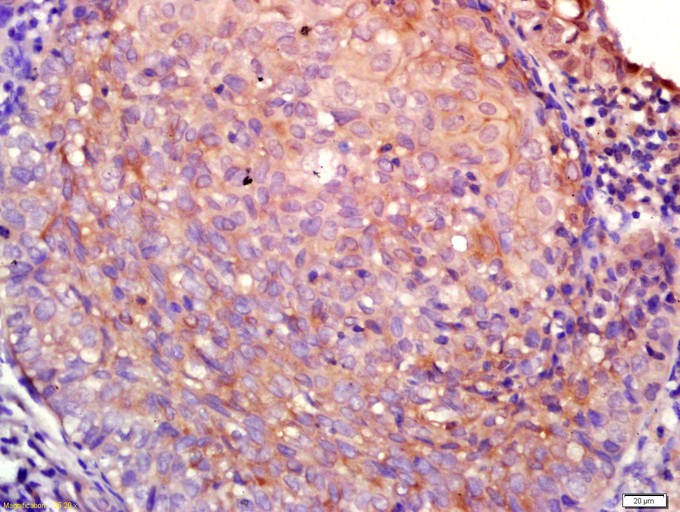
Fig1: Tissue/cell: human laryngocarcinoma; 4% Paraformaldehyde-fixed and paraffin-embedded;; Antigen retrieval: citrate buffer ( 0.01M, pH 6.0 ), Boiling bathing for 15min; Block endogenous peroxidase by 3% Hydrogen peroxide for 30min; Blocking buffer (normal goat serum,C-0005) at 37℃ for 20 min;; Incubation: Anti-AQP4 Polyclonal Antibody, Unconjugated 1:200, overnight at 4℃, followed by conjugation to the secondary antibody(SP-0023) and DAB(C-0010) staining
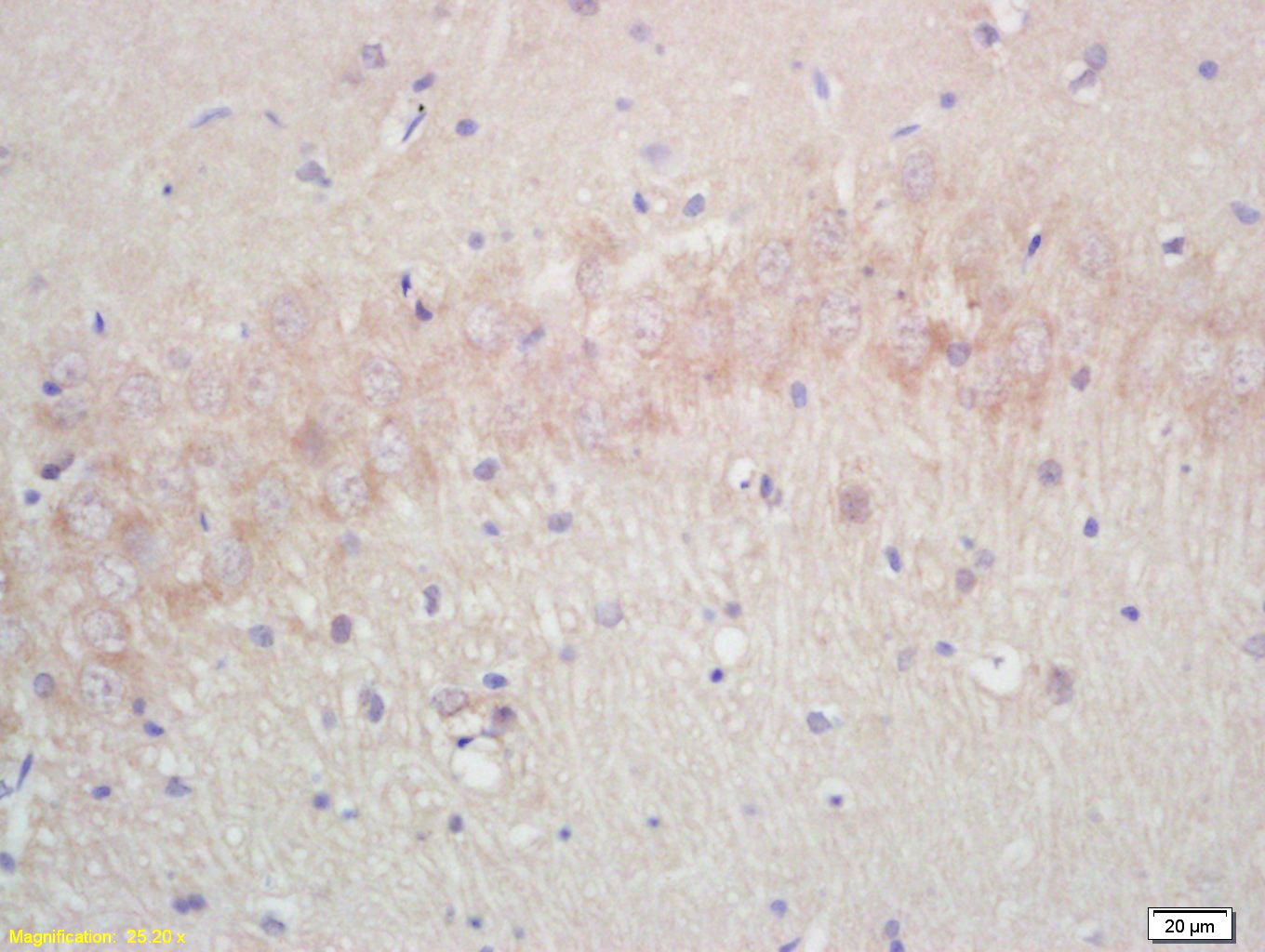
Fig2: Tissue/cell: rat brain tissue; 4% Paraformaldehyde-fixed and paraffin-embedded;; Antigen retrieval: citrate buffer ( 0.01M, pH 6.0 ), Boiling bathing for 15min; Block endogenous peroxidase by 3% Hydrogen peroxide for 30min; Blocking buffer (normal goat serum,C-0005) at 37℃ for 20 min;; Incubation: Anti-AQP4 Polyclonal Antibody, Unconjugated 1:200, overnight at 4℃, followed by conjugation to the secondary antibody(SP-0023) and DAB(C-0010) staining

Fig3: Tissue/cell: mouse kidney tissue; 4% Paraformaldehyde-fixed and paraffin-embedded;; Antigen retrieval: citrate buffer ( 0.01M, pH 6.0 ), Boiling bathing for 15min; Block endogenous peroxidase by 3% Hydrogen peroxide for 30min; Blocking buffer (normal goat serum,C-0005) at 37℃ for 20 min;; Incubation: Anti-AQP4 Polyclonal Antibody, Unconjugated 1:200, overnight at 4℃, followed by conjugation to the secondary antibody(SP-0023) and DAB(C-0010) staining
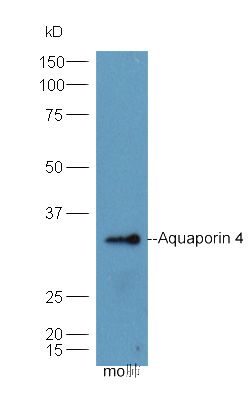
Fig4: Sample: mouse lung lysate at 30ug;; Primary: Anti-Aquaporin 4 at 1:300;; Secondary: HRP conjugated Goat-Anti-rabbit IgG(bse-0295G-HRP) at 1: 5000;; Predicted band size:36 kD; Observed band size:34 kD
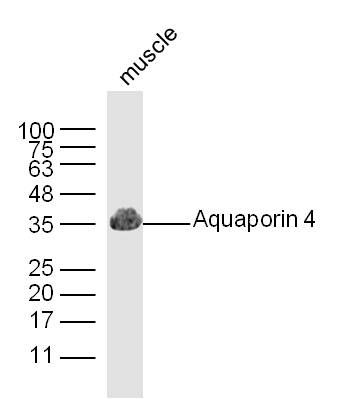
Fig5: Sample: Muscle(Mouse) lysate at 30ug; Primary: Anti-Aquaporin 4 at 1:300; Secondary: IRDye800CW Goat Anti-Rabbit IgG at 1/20000 dilution; Predicted band size:36kD Observed band size:35kD
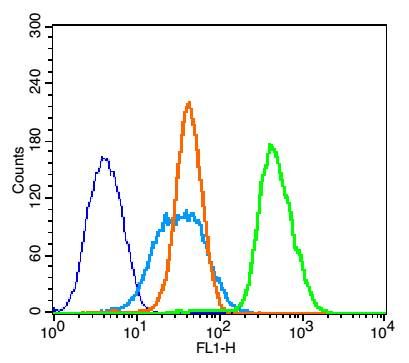
Fig6: Blank control: K562 (blue).; Primary Antibody:Rabbit Anti-Aquaporin 4 antibody ( Green); Dilution: 1μg in 100 μL 1X PBS containing 0.5% BSA;; Isotype Control Antibody: Rabbit IgG(orange) ,used under the same conditions;; Secondary Antibody: Goat anti-rabbit IgG-FITC(white blue), Dilution: 1:200 in 1 X PBS containing 0.5% BSA.; Protocol; The cells were fixed with 2% paraformaldehyde for 10 min at 37℃. Primary antibody ( 1μg /1x10^6 cells) were incubated for 30 min at room temperature, followed by 1 X PBS containing 0.5% BSA + 10% goat serum (15min) to block non-specific protein-protein interactions. Then the Goat Anti-rabbit IgG/FITC antibody was added into the blocking buffer mentioned above to react with the primary antibody at 1/200 dilution for 30 min at room temperature. Acquisition of 20,000 events was performed.
- Background
Related Products / Services
Please note: All products are "FOR RESEARCH USE ONLY AND ARE NOT INTENDED FOR DIAGNOSTIC OR THERAPEUTIC USE"
